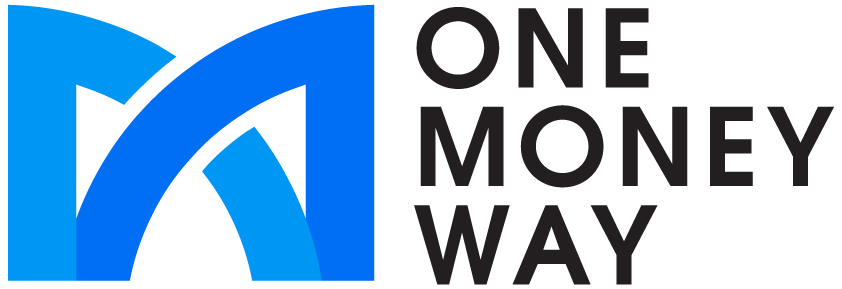What are negotiable instruments? Key terms for business transactions
In the realm of finance, negotiable instruments serve as essential tools that facilitate seamless transactions and uphold financial agreements. These instruments, like checks, promissory notes, and bills of exchange, are legally binding documents that guarantee payment or fulfillment of obligations. Their widespread use shows their reliability and efficiency in managing payments, extending credit, and formalizing agreements.
Negotiable instruments offer businesses a secure and standardized way to ensure payments, whether for goods, services, or contracts. For example, a check simplifies fund transfer without cash, while a promissory note guarantees future repayment. Bills of exchange, widely used in international trade, allow exporters and importers to transact confidently, even with unfamiliar entities.
Negotiable instruments provide individuals with a clear, enforceable way to manage finances. Whether using a check for expenses or a promissory note for a loan, they offer convenience and legal certainty. These tools ensure timely payments, meet commitments, and maintain trust in financial transactions.

Why should you care about negotiable instruments?
Negotiable instruments play a crucial role in facilitating the smooth flow of money between individuals and businesses.
These instruments, including checks, promissory notes, and bills of exchange, are legally binding documents that guarantee payment or fulfillment of financial obligations.By formalizing agreements, these instruments act as a bridge, making financial dealings secure and efficient.
One of their key advantages is maintaining cash flow. Checks, for instance, allow individuals and businesses to make payments without carrying large sums of cash, while promissory notes and bills of exchange offer a reliable way to manage credit and deferred payments. This not only keeps money circulating but also fosters economic stability by encouraging trade and investment.
Moreover, negotiable instruments establish trust between parties. With their legal backing, they serve as a guarantee that the terms of the transaction will be honored. For example, a supplier accepting a bill of exchange from a buyer knows they have legal recourse if payment terms are not met.
Failing to understand how these instruments function can lead to missed opportunities or even financial challenges. Misusing or neglecting their terms can result in disputes, cash flow problems, or breaches of trust. Thus, having a solid grasp of negotiable instruments is essential for leveraging their benefits while avoiding pitfalls in financial dealings.
What are negotiable instruments?

A negotiable instrument is a written document that guarantees payment of a specific amount, either immediately or in the future. Its value lies in its transferability—once issued, it can be easily passed to another person, often by signing or handing it over. This simplicity of transfer makes negotiable instruments highly useful in financial transactions, enabling smooth and flexible exchanges of value.
Common examples of negotiable instruments include checks, promissory notes, and bills of exchange.A check authorizes a bank to pay a specific amount from a person’s account to the payee. A promissory note is a written promise to pay a set amount by a certain date. Bills of exchange, commonly used in international trade, ensure payment for goods or services at a future date.
The main function of these instruments is to ensure debts are paid and transactions proceed smoothly. By offering a clear, legally enforceable promise to pay, negotiable instruments streamline financial dealings, reduce risk, and make business interactions more predictable and secure.
What makes negotiable instruments special?
Negotiable instruments offer several key advantages that make them valuable tools in financial transactions. First and foremost, they are easy to transfer. With minimal effort, these instruments can be passed from one party to another, typically requiring only a signature or physical handover. This ease of transfer makes them highly flexible and useful in various situations, whether in business dealings or personal loans.
Secondly, negotiable instruments provide a clear promise or order to pay a specific amount of money. There’s no ambiguity about the terms—whether it’s a check, a promissory note, or a bill of exchange—the amount to be paid and the timing are clearly outlined. This removes the guesswork from financial transactions and ensures that all parties understand their obligations.
Finally, negotiable instruments are legally recognized and standardized. This means that both the issuer and the holder of the instrument are protected under the law. If a dispute arises, the legal framework surrounding these instruments ensures that the rights of both parties are upheld. This legal recognition helps maintain trust and security in financial dealings, providing peace of mind that the transaction will be honored as agreed and that both parties will receive what they’re owed.
The different types of negotiable instruments
Promissory notes
A promissory note is like a simple IOU. It’s a written promise from one person to another to pay a specific amount of money, either right away or at a future date. You’ll often see these in situations where someone is borrowing money, like a personal loan or a small business loan.
The note lays out the terms clearly—how much is owed, when it’s due, and any interest that needs to be paid. It’s a straightforward way to keep track of a debt, making sure both sides know what’s expected.
Bills of exchange
Bills of exchange are a bit more formal and are mainly used in international trade. Think of them as an order from one person to another to pay a third party. For example, if you’re buying goods from another country, the seller might send you a bill of exchange that orders your bank to pay them.
It’s a way to make sure that payments are made as promised, even when dealing with someone far away. What’s neat about these is that they can be transferred to someone else before the payment is due, adding extra flexibility.
Checks
Checks are probably the most familiar type of negotiable instrument. They’re simply written orders that tell your bank to pay a specific amount of money from your account to someone else.
What’s great about checks is that they’re safe and easy to use. You don’t need to carry cash around, and the person receiving the check can either deposit it into their bank account or cash it out. Checks are widely accepted and are a reliable way to make payments, whether you’re paying a bill, settling a debt, or just giving someone money.

How negotiable instruments work
The process of negotiation
Negotiating a negotiable instrument is really just a fancy way of saying you’re handing it over to someone else so they can collect the payment. This can be done by signing the back of the instrument—like when you endorse a check—or by simply giving it to the new holder.
Once it’s in their hands, they have the right to receive the money. This ease of transfer is one of the biggest reasons why negotiable instruments are so popular. They make it simple to move money around without a lot of hassle.
Legal protections
Negotiable instruments aren’t just pieces of paper—they’re backed by law. That means there are rules in place that protect everyone involved, making sure that the money promised actually gets paid.
For example, in the U.S., the Uniform Commercial Code (UCC) sets out the rights and responsibilities of everyone who handles these instruments. This legal backing helps prevent fraud and ensures that if there’s ever a dispute, the courts will enforce the terms of the instrument.
Benefits of using negotiable instruments
Liquidity and credit
One of the big perks of negotiable instruments is that they help keep cash flowing. Because they’re easy to transfer and can be quickly converted into cash, they make it easier for businesses to keep things running smoothly.
For instance, if a company needs cash fast, it can endorse a bill of exchange and get paid right away. Plus, these instruments can be used as collateral to secure loans, giving businesses another way to access credit when they need it.
Security and convenience
Security is a big deal when it comes to money, and negotiable instruments offer plenty of it. Since they’re legally enforceable, both the person making the payment and the person receiving it can trust that the money will change hands as promised.
This reduces the risk of not getting paid and makes everyone involved feel more comfortable. On top of that, these instruments are really convenient. They simplify the process of making payments, settling debts, and transferring money, so you don’t have to deal with a bunch of complicated steps or paperwork.
Flexibility in transactions
Another great thing about negotiable instruments is how flexible they are. Because they can be easily transferred, they’re useful in a lot of different situations. Whether you’re making a payment, settling a debt, or trying to get a loan, these instruments can help you get the job done.
For example, you could use a promissory note to pay a supplier or transfer a check to someone else to cover what you owe. This flexibility makes negotiable instruments a handy tool for managing money, no matter what kind of transaction you’re dealing with.
Legal recognition
The fact that negotiable instruments are legally recognized is a huge plus. This means that the terms of the instrument are clear and enforceable, reducing the chances of any disputes.
For businesses, this legal backing means they can complete transactions with confidence, knowing that the instrument will be honored by banks and courts if needed. This kind of certainty is important in financial dealings, and it’s one of the reasons why negotiable instruments are trusted and widely used in both personal and business finance.
Risks associated with negotiable instruments
Fraud and forgery
One of the biggest concerns with negotiable instruments is the chance of fraud and forgery. Because these documents can be easily passed from one person to another, someone with dishonest intentions could alter or create fake versions.
For instance, a check might be tampered with to change the amount or the name of the person who’s supposed to get paid, leading to unauthorized money being taken from your account.
Similarly, a counterfeit promissory note could trick someone into making an unintended payment. That’s why it’s so important to handle these instruments carefully, check their authenticity, and keep them secure to avoid falling victim to these risks.
Other potential risks
Beyond fraud and forgery, other risks include dealing with people who might not be able to pay what they owe (counterparty risk) or finding out that the person who issued the instrument can’t fulfill their promise (payment default). These risks highlight the need to work with trustworthy parties and use safe methods when dealing with negotiable instruments.
The legal aspects of negotiable instruments
Negotiable instruments are backed by a set of laws that provide a safety net for everyone involved.
In the United States, the Uniform Commercial Code (UCC) is the main set of rules that governs these instruments, explaining how they should be created, transferred, and enforced. This ensures that everyone knows their rights and responsibilities, which helps prevent problems like fraud or misunderstandings.
On a global scale, countries often have their own laws, but many follow similar guidelines to make sure these instruments work smoothly across borders. For example, the Geneva Conventions on Bills of Exchange and Promissory Notes set some international standards.
These legal protections are what make negotiable instruments reliable tools for financial transactions, giving you confidence that they’ll be honored and enforced if anything goes wrong.
The importance of negotiability in finance
Negotiability adds a lot of flexibility to how money moves in financial and legal transactions. Since negotiable instruments can be easily handed over to someone else, they make it simple to pay bills and settle debts quickly. This is particularly handy in business, where fast and secure money transfers are often needed.
For instance, a company can use a check or bill of exchange to pay a supplier, making sure that everyone gets paid on time. The ease with which these instruments can be transferred makes them an essential tool for managing money smoothly.
Examples of negotiable items
While checks, promissory notes, and bills of exchange are the most common negotiable instruments, there are other items that can be negotiable too. For example, things like stocks, bonds, certain contracts, and even some digital assets can be considered negotiable if they meet certain conditions. This shows just how versatile negotiability is in finance.
The bottom line
Understanding negotiable instruments is key to making smart financial moves. These tools offer flexibility, security, and legal backing, making them vital for businesses and individuals alike. Although there are risks like fraud and payment default, the benefits often outweigh them when you handle these instruments correctly. By knowing how they work and the laws that protect them, you can navigate the financial world with greater confidence.
FAQs
What is an example of a negotiable instrument?
A common example of a negotiable instrument is a check. It’s a written order that directs a bank to pay a specific amount of money from one person’s account to another.
Is a cheque a negotiable instrument?
Yes, a cheque is a negotiable instrument. It can be easily transferred to someone else, and the person holding it can cash or deposit it into their account.
What does negotiable mean in law?
In legal terms, negotiable means that something, like a financial document, can be transferred from one person to another, giving the new holder certain rights, like the right to be paid.
What is the most common negotiable instrument?
The most common negotiable instrument is the check. It’s widely used for everyday transactions, making it a staple in both personal and business finance.
What is the difference between negotiable and non-negotiable instruments?
Negotiable instruments can be transferred to another person who can then claim payment, like a check. Non-negotiable instruments, on the other hand, cannot be transferred in the same way, and only the original party can receive the payment.


